Pricing Guides & Dictionary of Makers Marks for Antiques & Collectibles

COLLECTING ANTIQUE ALABASTER:
Tips for Identifying and Researching
Join the most updated and complete collectibles research online - Learn more...
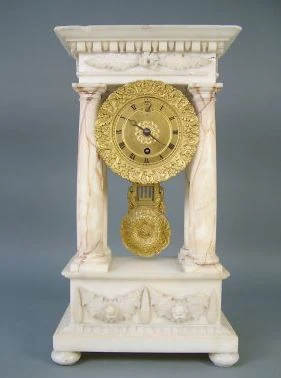 Collecting antique alabaster is a fascinating hobby that allows individuals to appreciate the beauty and craftsmanship of historical artifacts. Alabaster is a type of stone that has been used for thousands of years for various purposes, including sculpture, architecture, and decorative objects. Collectors of alabaster can find a wide range of items, including figurines, vases, lamps, and other decorative objects.
Collecting antique alabaster is a fascinating hobby that allows individuals to appreciate the beauty and craftsmanship of historical artifacts. Alabaster is a type of stone that has been used for thousands of years for various purposes, including sculpture, architecture, and decorative objects. Collectors of alabaster can find a wide range of items, including figurines, vases, lamps, and other decorative objects.
However, before beginning a collection of alabaster, it is important to understand what to look for and how to research the items. This article will provide an overview of alabaster and its history, as well as tips for identifying and researching antique alabaster pieces.
Understanding Alabaster
Alabaster is a mineral composed of gypsum, a soft sulfate mineral that is easy to carve and polish. It has been used since ancient times, particularly in Egypt, where it was used for ornamental purposes, such as sarcophagi and canopic jars. The Greeks and Romans also used alabaster for sculpture and decorative purposes, and it was popular throughout the Middle Ages and the Renaissance in Europe.
Alabaster can be found in a range of colors, including white, gray, pink, and yellow. It is often translucent and can be carved into intricate designs, making it a popular material for decorative objects. In addition to its use in sculpture and architecture, alabaster has also been used for household items such as lampshades and inkwells.
Identifying Antique Alabaster
Identifying antique alabaster can be a challenge, as there are many imitation pieces on the market. However, there are several key characteristics to look for when determining if an item is genuine antique alabaster.
First, antique alabaster is often heavier than modern imitations, as it is denser and more solid. It will also typically have a softer and smoother surface, as it has been exposed to air and moisture for a longer period of time.
Another important factor to consider is the design of the item. Antique alabaster pieces were often carved with intricate designs and patterns, whereas modern pieces may have simpler designs. Additionally, antique alabaster may show signs of wear or aging, such as cracking or discoloration, which can indicate its age and authenticity.
Researching Alabaster Collectibles
Once an antique alabaster piece has been identified, it is important to research its history and value. There are several ways to research antique alabaster, including online resources, books, and expert appraisers.
One of the best online resources for researching antique alabaster is the website of the Antique Collectors' Club, which offers a wealth of information on alabaster and other collectible items. The website provides articles, books, and a directory of dealers and appraisers, as well as a forum where collectors can discuss and share their knowledge.
Another useful resource is the Art Renewal Center, which features a database of antique alabaster sculptures and other artworks. The database includes images, descriptions, and historical information, as well as links to related resources.
Books are also an excellent source of information for researching antique alabaster. There are many books available on the history and production of alabaster, as well as books on specific artists and periods. Some recommended titles include "Alabaster: The Material of Sculpture" by Joanna Barnes and "The Art of Alabaster Carving in England" by Michael Messenger.
Finally, it is always a good idea to consult with an expert appraiser when researching the value of an antique alabaster piece. An appraiser can provide an expert opinion on the authenticity, age, and value of the item, as well as offer advice on buying and selling antique alabaster.
Conclusion
Collecting antique alabaster is a fascinating hobby that allows individuals to appreciate the beauty and history of this unique material. By understanding the characteristics of antique alabaster and how to research its history and value, collectors can build a valuable and meaningful collection.
When collecting antique alabaster, it is important to be cautious and do thorough research to ensure that the items are authentic and have value. This includes examining the design and surface of the item, as well as researching its history and consulting with experts.
Overall, collecting antique alabaster can be a rewarding and fulfilling hobby for those who appreciate the beauty and history of this unique material. With proper research and knowledge, collectors can build a valuable collection that will be treasured for generations to come.
Unlock the true value of your collection with our comprehensive research guides from identifying makers' marks to appraising all kinds of antiques and collectibles, including items featured in this article.
Our up-to-date information will give you an accurate understanding of your items' worth. Don't miss out on this valuable resource - visit our research tools today!
In addition to some examples shown below on this page, you can also search our price guide for your own treasures.
Examples of related items from our Price Guides
-
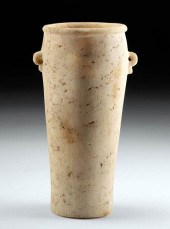 TALL ANCIENT BACTRIAN ALABASTER VESSELAn
[more like this]
TALL ANCIENT BACTRIAN ALABASTER VESSELAn
[more like this]
-
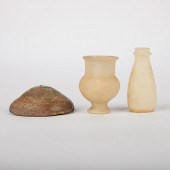 GRP: 3 EGYPTIAN ALABASTER & POTTERY VESS
[more like this]
GRP: 3 EGYPTIAN ALABASTER & POTTERY VESS
[more like this]
-
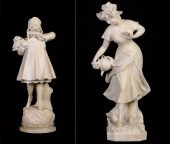 19C ITALIAN SCHOOL ALABASTER FIGURES INC
[more like this]
19C ITALIAN SCHOOL ALABASTER FIGURES INC
[more like this]
-
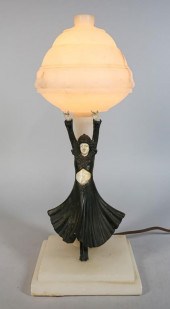 JB HIRSCH STYLE ALABASTER & WHITE METAL
[more like this]
JB HIRSCH STYLE ALABASTER & WHITE METAL
[more like this]
-
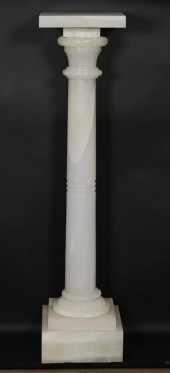 NEOCLASSICAL STYLE ALABASTER PEDESTALNeo
[more like this]
NEOCLASSICAL STYLE ALABASTER PEDESTALNeo
[more like this]
-
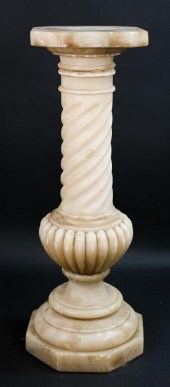 ITALIAN STYLE ALABASTER PEDESTAL OR PLIN
[more like this]
ITALIAN STYLE ALABASTER PEDESTAL OR PLIN
[more like this]
-
 17TH C. GILLIS NENS ALABASTER RELIEFS BI
[more like this]
17TH C. GILLIS NENS ALABASTER RELIEFS BI
[more like this]
-
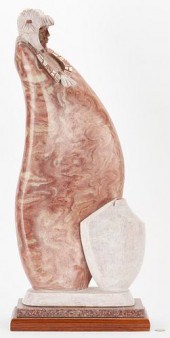 ALVIN MARSHALL ALABASTER SCULPTURE, HOPI
[more like this]
ALVIN MARSHALL ALABASTER SCULPTURE, HOPI
[more like this]
-
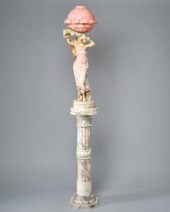 MONUMENTAL ALABASTER FIGURAL FLOOR LAMPA
[more like this]
MONUMENTAL ALABASTER FIGURAL FLOOR LAMPA
[more like this]
-
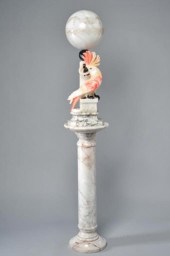 CARVED ALABASTER FLOOR LAMPA carved alab
[more like this]
CARVED ALABASTER FLOOR LAMPA carved alab
[more like this]
-
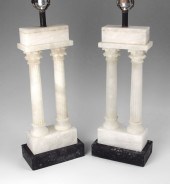 PAIR ALABASTER GREEK REVIVAL LAMPS: Each
[more like this]
PAIR ALABASTER GREEK REVIVAL LAMPS: Each
[more like this]
-
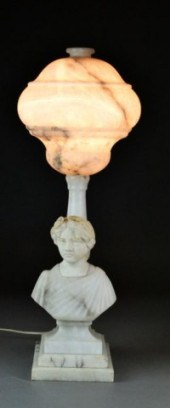 Large Alabaster Figural Lamp and ShadeHa
[more like this]
Large Alabaster Figural Lamp and ShadeHa
[more like this]
There are many more auction results available to our members...





